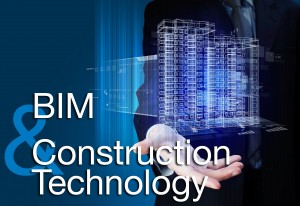
The Origins of BIM
The journey toward BIM has its roots in moving the industry from 2D drawings into the 3D world to facilitate coordination among building trades and decrease the amount of coordination and waste in the field. This led to the push for prefabrication, visualized scheduling (4D), real-time estimating (5D) and facility management (6D) all to improve the efficiency of the building life cycle.
Safety and the Modeling Process
McKenney’s and our customers place a high value on safety. It is a core initiative and value at our company. So, can we leverage BIM to create a safer work environment? Absolutely! In fact, we already do. Here are a couple of examples:
- Equipment Service and Maintenance Access: Our teams model the manufacturer’s recommended service clearances and NEC code clearances to ensure these areas remain clear of piping, conduits, walls, etc. that would affect these clearance spaces. By maintaining these clear working areas, a safer work environment is provided for the maintenance professionals that need to access the equipment over time.
- Prefabrication: Developing fully coordinated models prior to construction in the field allows companies like ours to prefabricate duct, piping and plumbing assemblies at our campus and ship them to the site for final installation. This work is completed in an environmentally controlled environment while reducing the need to work from ladders, around slab openings and in other potentially unsafe situations.
Leveraging the Model
Have you ever been told a story that leverages both words and pictures to convey the intent of the storyteller? How does this compare to simply being told a list of facts to remember? Most people forget the list of facts just minutes after we hear them. Stories and pictures connect to our long term memory. If we can use BIM to show our field teams specific visual examples of unsafe working conditions and contrast them with safe working conditions, we begin to engage them on a different level. We start having conversations centered on the virtual environment that people can interact with, specifically about hazards and how to avoid/plan for them without being exposed to danger. A practical example of such application from the global infrastructure group Balfour Beatty can be seen here.
Looking to the Future
A fully populated model provides the opportunity to analyze and interact with the virtual building. One such example is the research and development being done at the Georgia Institute of Technology by professors Jochen Teizer and Chuck Eastman. They are working to develop rule-checking software that applies OSHA requirements to the 4D model to identify temporary conditions, such as unprotected openings or confined spaces, that represent a safety hazard. This type of virtual job hazard analysis can identify and help predict safety issues well in advance of our team being potentially placed in harm’s way.
Visualization is a key factor in our learning and development. It engages the brain in ways that words cannot. Advances in technology continue to allow us to leverage BIM in new ways. Let’s always be aware of how we can apply this tool and others in new ways, especially in the area of safety, to make our industry stronger.
Have a question for our experts? Leave your comment below, check out our Capabilities Page or contact our team directly at engineering.solutions@mckenneys.com.






